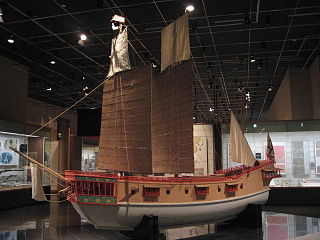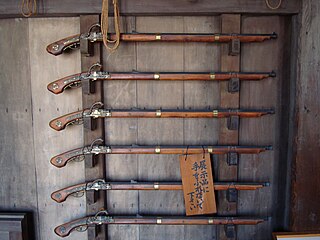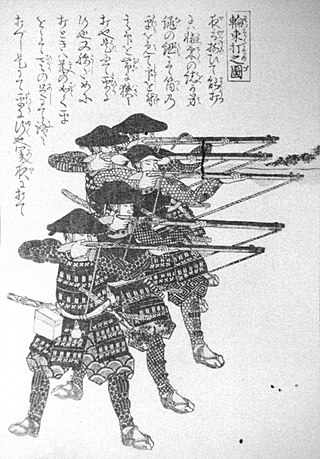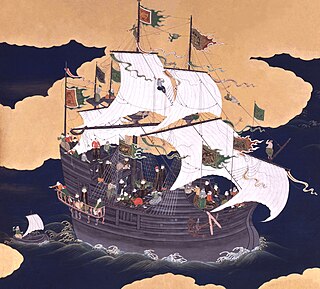
The history of the Kingdom of Portugal from the Illustrious Generation of the early 15th century to the fall of the House of Aviz in the late 16th century has been named the "Portuguese golden age" and the "Portuguese Renaissance". During this period, Portugal was the first European power to begin building a colonial empire as during the Age of Exploration Portuguese sailors and explorers discovered an eastern route to India as well as several Atlantic archipelagos and colonized the African coast and Brazil. They also explored the Indian Ocean and established trading routes throughout most of southern Asia, sending the first direct European maritime trade and diplomatic missions to Ming China and to Japan, at the same time installing trading posts and the most important colony: Portuguese Macau. The Portuguese Renaissance produced a plethora of poets, historians, critics, theologians, and moralists. The Cancioneiro Geral by Garcia de Resende is taken to mark the transition from Old Portuguese to the modern Portuguese language.

Tanegashima (種子島) is one of the Ōsumi Islands belonging to Kagoshima Prefecture, Japan. The island, 444.99 km2 (171.81 sq mi) in area, is the second largest of the Ōsumi Islands, and has a population of 33,000 people. Access to the island is by ferry, or by air to New Tanegashima Airport. Administratively, the island is divided into the city, Nishinoomote, and the two towns, Nakatane and Minamitane. The towns belong to Kumage District.

The Portuguese Empire, also known as the Portuguese Overseas or the Portuguese Colonial Empire, was composed of the overseas colonies, factories, and later overseas territories, governed by the Kingdom of Portugal, and later the Republic of Portugal. It was one of the longest-lived colonial empires in European history, lasting 584 years from the conquest of Ceuta in North Africa in 1415 to the transfer of sovereignty over Macau to China in 1999. The empire began in the 15th century, and from the early 16th century it stretched across the globe, with bases in Africa, North America, South America, and various regions of Asia and Oceania.

A matchlock or firelock is a historical type of firearm wherein the gunpowder is ignited by a burning piece of flammable cord or twine that is in contact with the gunpowder through a mechanism that the musketeer activates by pulling a lever or trigger with their finger. This firing mechanism was an improvement over the hand cannon, which lacked a trigger and required the musketeer or an assistant to apply a match directly to the gunpowder by hand. The matchlock mechanism allowed the musketeer to apply the match himself without losing his concentration.

Fernão Mendes Pinto was a Portuguese explorer and writer. His voyages are recorded in Pilgrimage, his autobiographical memoir, which was published posthumously in 1614. The historical accuracy of the work is debatable due to the many events that seem far-fetched or at least exaggerated, earning him the nickname Fernão Mentes Minto. Still, many aspects of the work can be verified, particularly through records of Pinto's service to the Portuguese crown and by his association with Jesuit missionaries.

The Age of Discovery, also known as the Age of Exploration, was part of the early modern period and largely overlapped with the Age of Sail. It was a period from approximately the late 15th century to the 17th century, during which seafarers from a number of European countries explored, colonized, and conquered regions across the globe. The Age of Discovery was a transformative period in world history when previously isolated parts of the world became connected to form the world-system and laid the groundwork for globalization. The extensive overseas exploration, particularly the opening of maritime routes to the Indies and the European colonization of the Americas by the Spanish and Portuguese, later joined by the English, French and Dutch, spurred in the International global trade. The interconnected global economy of the 21st century has its origins in the expansion of trade networks during this era.

Red seal ships were Japanese armed merchant sailing ships bound for Southeast Asian ports with red-sealed letters patent issued by the early Tokugawa shogunate in the first half of the 17th century. Between 1600 and 1635, more than 350 Japanese ships went overseas under this permit system.
This is a historical timeline of Portugal's Second Dynasty.

The Ōsumi Islands is an archipelago in the Ryukyu Archipelago, and are the northernmost group of the Ryukyu Islands, The chain extends from the southern tip of Kyushu to Yakushima. Administratively, the group belongs within Kagoshima Prefecture, Japan.
Wang Zhi, art name Wufeng (五峰), was a Chinese pirate lord of the 16th century, one of the main figures among the wokou pirates prevalent during the reign of the Jiajing Emperor. Originally a salt merchant, Wang Zhi turned to smuggling during the Ming dynasty's period of maritime prohibitions banning all private overseas trade, and eventually became the head of a pirate syndicate stretching across the East and South China Seas, from Japan to Thailand. Through his clandestine trade, he is credited for spreading European firearms throughout East Asia, and for his role in leading the first Europeans to reach Japan in 1543.

This is a chronology of the early European exploration of Asia.

Portuguese maritime exploration resulted in the numerous territories and maritime routes recorded by the Portuguese as a result of their intensive maritime journeys during the 15th and 16th centuries. Portuguese sailors were at the vanguard of European exploration, chronicling and mapping the coasts of Africa and Asia, then known as the East Indies, and Canada and Brazil, in what came to be known as the Age of Discovery.

Matsura Takanobu or Taqua Nombo was a 16th-century Japanese samurai and 25th hereditary lord of the Matsura clan of Hirado. He was one of the most powerful feudal lords of Kyūshū and one of the first to allow trading with Europeans, particularly the Portuguese, through whom he amassed great profits in the import of western firearms. He was also an early host and patron to the Jesuits, who he hoped would help secure an increase in trade with the Portuguese and other European traders.

Firearms were introduced to Japan in the 13th century during the first Mongol invasion, referred to as teppō. Portuguese firearms were introduced in 1543, and intense development followed, with strong local manufacture during the period of conflicts of the late 16th century. Hōjutsu, the art of gunnery, is the Japanese martial art dedicated to firearms usage.

Nanban trade or the Nanban trade period was a period in the history of Japan from the arrival of Europeans in 1543 to the first Sakoku Seclusion Edicts of isolationism in 1614. Nanban is a Japanese word borrowed from Chinese Nanman, which had been used to designate people from Southern China, the Ryukyu Islands, the Indian Ocean, and Southeast Asia centuries prior to the arrival of the first Europeans. For instance, according to the Nihon Kiryaku (日本紀略), Dazaifu, the administrative center of Kyūshū, reported that the Nanban pirates, who were identified as Amami islanders by the Shōyūki, pillaged a wide area of Kyūshū in 997. In response, Dazaifu ordered Kikaijima (貴駕島) to arrest the Nanban.

Tanegashima, most often called in Japanese and sometimes in English hinawajū, was a type of matchlock-configured arquebus firearm introduced to Japan through the Portuguese Empire in 1543. It was used by the samurai class and their ashigaru "foot soldiers", and within a few years its introduction in battle changed the way war was fought in Japan forever. It, however, could not completely replace the yumi (longbow). Although the Japanese developed various techniques to improve the gun's shortcomings, specifically its slow rate of fire and inability to fire in the rain, it remained inferior to the yumi in these respects, and the latter continued to be an important weapon on the battlefield. After Tokugawa Ieyasu destroyed the Toyotomi clan in the siege of Osaka and established the Tokugawa shogunate, the relatively peaceful Edo period arrived, and the use of tanegashima declined.

Japan–Portugal relations are the current and historical diplomatic, cultural and trade relations between Japan and Portugal. The history of relations between the two nations goes back to the mid 16th century, when Portuguese sailors first arrived in Japan in 1543, and diplomatic relations officially restarted in the 19th century with the Treaty of Peace, Amity and Commerce.

The Battle of Fukuda Bay in 1565 was the first recorded naval battle between Europeans and the Japanese. A flotilla of samurai under the daimyō Matsura Takanobu attacked two Portuguese trade vessels that had shunned Matsura's port in Hirado and had gone instead to trade at Fukuda, a port belonging to the rival Ōmura Sumitada. The engagement was part of a process of trial and error by the Portuguese traders to find a safe harbour for their carracks in Japan that eventually brought them to Nagasaki.

António da Mota was a Portuguese trader and explorer who, in 1543, together with Fernão Mendes Pinto and Francisco Zeimoto, became one of the first Europeans to set foot in Japan.

















